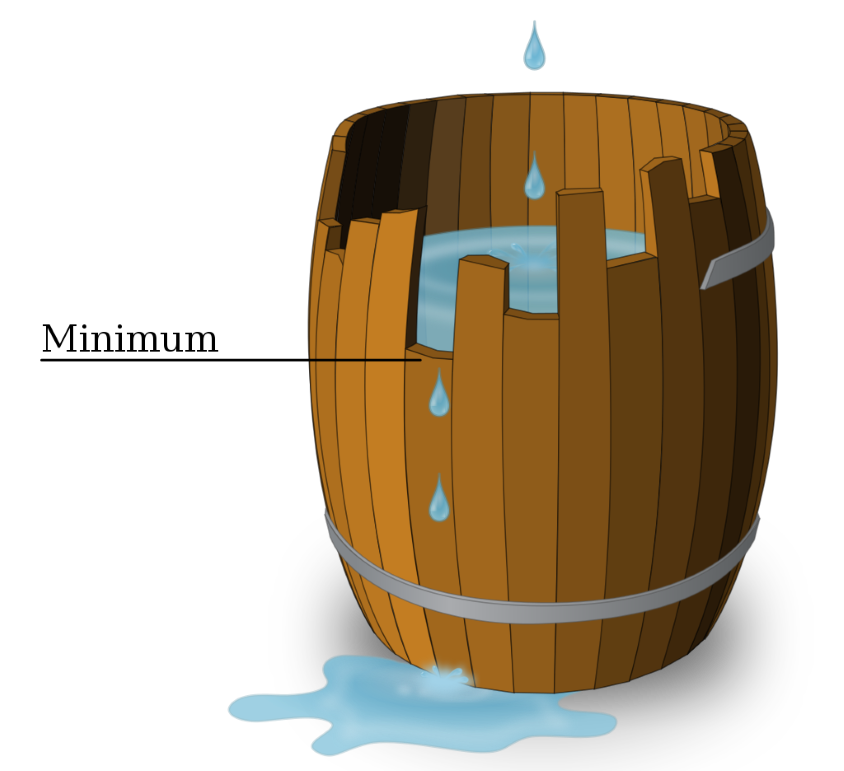Soil fertility, which is an aspect of soil health, is the ability of soil to sustain plant growth. There are two main properties which characterise a fertile soil: 1) the ability to supply adequate amounts of essential plant nutrients and soil water in order to support plant growth and reproduction; and 2) the absence of harmful, toxic substances which can inhibit plant growth and reproduction. The first part of this is obviously where the law of the minimum comes into play, which states that growth is limited by the least available resource. The law of the minimum was developed by Carl Sprengel in 1828, and made popular by Justus von Liebig soon thereafter. It has been taught in soil science and agronomy classes ever since. It is most recognisable by the slatted bucket with the water escaping from the lowest slat.
If we all know and understand the law of the minimum, why don’t we manage our soils and fertiliser applications accordingly? I have come across numerous farms on which we have taken soil samples where the phosphorous levels are in excess, and the potassium levels are deficient. Yet, when it comes down to fertiliser applications, farmers seem to be more inclined to apply phosphate fertiliser at planting, than to spend money on potassium fertiliser. In trying to understand this, I have come to the realisation that farmers are often influenced by traditional practices. In this case, the tradition to apply phosphate fertiliser at planting, even if the soil results say that there are actually a dangerous excess of available phosphorous in the soil.
The other problem is with the traditional representation of the law of the minimum slatted bucket. The lowest slat is most often already indicated as nitrogen. This is often true from the perspective of demand by the plant, but when considered purely from a fertiliser perspective, nitrogen is not always the most limiting nutrient. This could be because there are many other natural sources of nitrogen which we should be taking into account, for example mineralisation.
Alternatively it could be because other nutrients might be more limiting than nitrogen. It is not about what there is the most of, but what is limiting. When potassium is limiting, no matter how much nitrogen there is, growth will not be optimal.
In order to gain anything from the law of the minimum, it is imperative that we know what the least available resource is. For this, we need to take soil samples, and do fertility testing on them. We then need to make management decisions based on these results, rather than on traditional practices which might, or might not, be based on sound soil fertility principles.
- A carbon footprint assessment for pasture-based dairy farming systems in South Africa - 2024-02-07
- What progress have farms participating with Trace & Save made over the past 10 years? - 2023-09-06
- Carbon footprint reduction over time: Lessons from pasture-based dairy farms in South Africa - 2023-09-04


